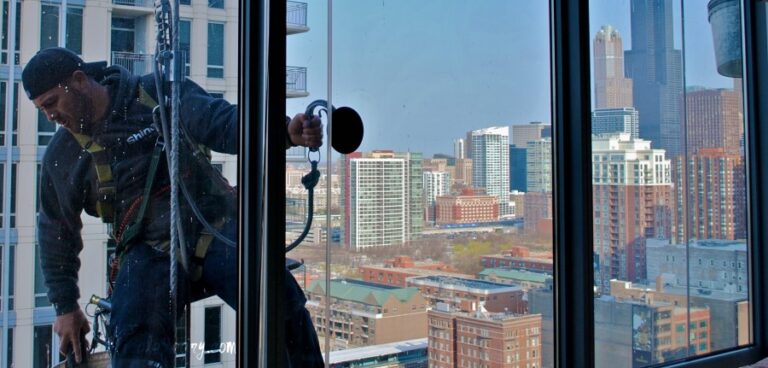Say Anything: A Case for Dialogue

Recently I was reading the prose section of an online literary magazine’s fall issue when I could not overcome a nagging sense that something was lacking. The stories themselves were well-written; the style was cohesive with the magazine’s tone; the narratives were engaging. Yet it somehow felt incomplete. As I scrolled through the stories again, it finally hit me–dialogue. None of the stories contained a stitch of dialogue. Certainly there were references to it and summaries of conversations. Actual dialogue, however, was nowhere to be seen.
For me, a gift for believable, memorable, and appropriately used dialogue is one of the signs of a great writer. Amateurish writing often either ignores it entirely or saturates the prose with it. And may the literary gods spare me from those who elect to make stylistic choices such as eliminating quotation marks or not including tags, claiming it is innovative. The list of people who can pull off that particular fete is short: Ernest Hemingway, Charles Bukowski, Cormac McCarthy. I’m sure other readers would include additional writers, but collectively, we couldn’t come up with many.
I also have little patience for tin-eared writers with no gift for capturing authentic speech. I once stopped reading an author entirely when he had college-educated, professional women referring to each other as “girl” and “girlfriend” every other sentence.
Dialogue isn’t just characters talking to each other–it is a way of revealing character. What a character says and what other characters say about that character tell the reader just as much as behavior or interior monologue. Looking at Hemingway’s “Hills Like White Elephants,” we are given little beyond the dialogue.
‘It tastes like licorice,’ the girl said and put the glass down.
‘That’s the way with everything.’
‘Yes,’ said the girl.
‘Everything tastes of licorice. Especially all the things you’ve waited so long for, like absinthe.’
‘Oh, cut it out.’
‘You started it,’ the girl said.
‘I was being amused. I was having a fine time.’
‘Well, let’s try and have a fine time.’
‘All right. I was trying. I said the mountains looked like white elephants. Wasn’t that bright?’
‘That was bright.’
‘I wanted to try this new drink. That’s all we do, isn’t it – look at things and try new drinks?’
‘I guess so.’
We are given no names, no real exposition prior to this. Just that they are at a train station in Spain. Yet their exchange, even before the meat of the conversation takes place, tells us much about them and their relationship. They have been together long enough to have developed a pattern of behavior, but there is an underlying strain between them. It isn’t clear just yet what that strain is (Hemingway will reveal it in his own minimalist way); we only know that they are bickering, albeit whether in earnest or play is yet to be determined. All this from a simple discussion of drinks.
The eventual story Hemingway tells, of a man and a woman at a physical and emotional crossroads, could not be told without dialogue. Perhaps the story’s greatest success is that the real cause of their strain–her pregnancy–is never mentioned. When discussing this story in my class once, I had a student ask, “Why don’t they just come out and say it?” Before I could reply, a classmate responded, “Do you really want to just say that in front of everyone? How many times do we say something that really means something else?” I didn’t even elaborate as the student had nailed it: How many times in life do we say one thing when we are really talking about something more?
If what a character says doesn’t correlate with what they mean, this gives us another layer to explore. In “A Perfect Day for Bananafish,” J.D. Salinger uses dialogue not only for exposition, but to provide great contrasts in tone while developing character. Half of the story is Muriel talking long-distance to her mother from her hotel room. Not only does having the conversation take place on the telephone serve the plot, it shows how distant Muriel is from her parents and their concerns. The reader receives hints that things are not right with Seymour, the yet unseen husband, as Muriel elects to explain away events that her mother insists on revisiting.
What resonates with this conversation is how the women switch from discussing psychiatrists and accidents to sunscreen and dresses. The conversation gives us the needed background and sets the tone while still feeling authentic, as exhibited in this exchange:
“How are the clothes this year?”
“Terrible. But out of this world. You see sequins – everything,” said the girl.
“How’s your room?”
“All right. Just all right, though. We couldn’t get the room we had before the war,”’ said the girl.
“The people are awful this year. You should see what sits next to us in the dining room. At the next table. They look as if they drove down in a truck.”
“Well, it’s that way all over. How’s your ballerina?”
“It’s too long. I told you it was too long.”
“Muriel, I’m only going to ask you once more – are you really all right?”
“Yes, Mother,” said the girl.
“For the ninetieth time.”
“And you don’t want to come home?”
“No, Mother.”
When we finally meet Seymour, he is on the beach talking to a three year-old little girl, Sybil. As with Muriel’s conversation, it has an authentic feel to it, mixing innocence and whimsy, such as Seymour’s explanation of the tragic life of bananafish.
“Well, they swim into a hole where there’s a lot of bananas. They’re very ordinary-looking fish when they swim in. But once they get in, they behave like pigs. Why, I’ve known some bananafish to swim into a banana hole and eat as many as seventy-eight bananas.” He edged the float and its passenger a foot closer to the horizon. “Naturally, after that they’re so fat they can’t get out of the hole again. Can’t fit through the door.”
The contrast comes, then, when Seymour leaves the beach and rides the elevator to return to Muriel.
On the sub-main floor of the hotel, which the management directed bathers to use, a woman with zinc salve on her nose got into the elevator with the young man.
“I see you are looking at my feet,” he said to her when the car was in motion. “I beg your pardon?” said the woman.
“I said I see you’re looking at my feet.”
“I beg your pardon. I happened to be looking at the floor,” said the woman, and faced the doors of the car.
“If you want to look at my feet, say so,” said the young man. “But don’t be a God-damned sneak about it.”
The previous scene has shown Seymour’s patience with a young child; he lashes out irrationally, however, at a random woman in the elevator. Through his use of dialogue in these three scenes, Salinger is able to build not only the plot, but also his characters in such a way that the story’s shocking climax seems almost inevitable when revisiting the work for a second reading.
To use dialogue effectively in an enviable skill. As a reader, I often find that ability to be a swaying point for my loyalty. I want the characters to speak and speak well. That’s not too much to ask.

